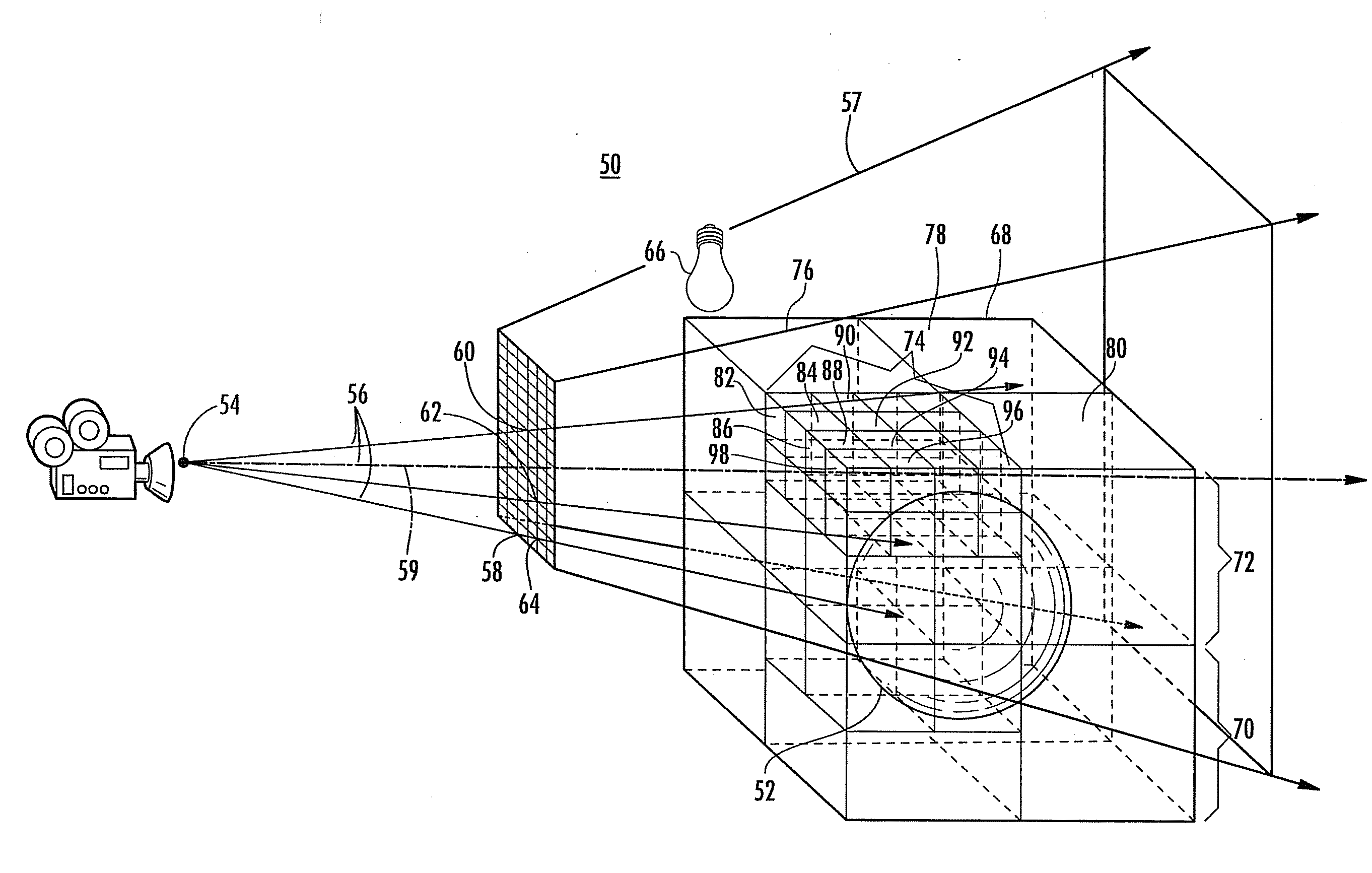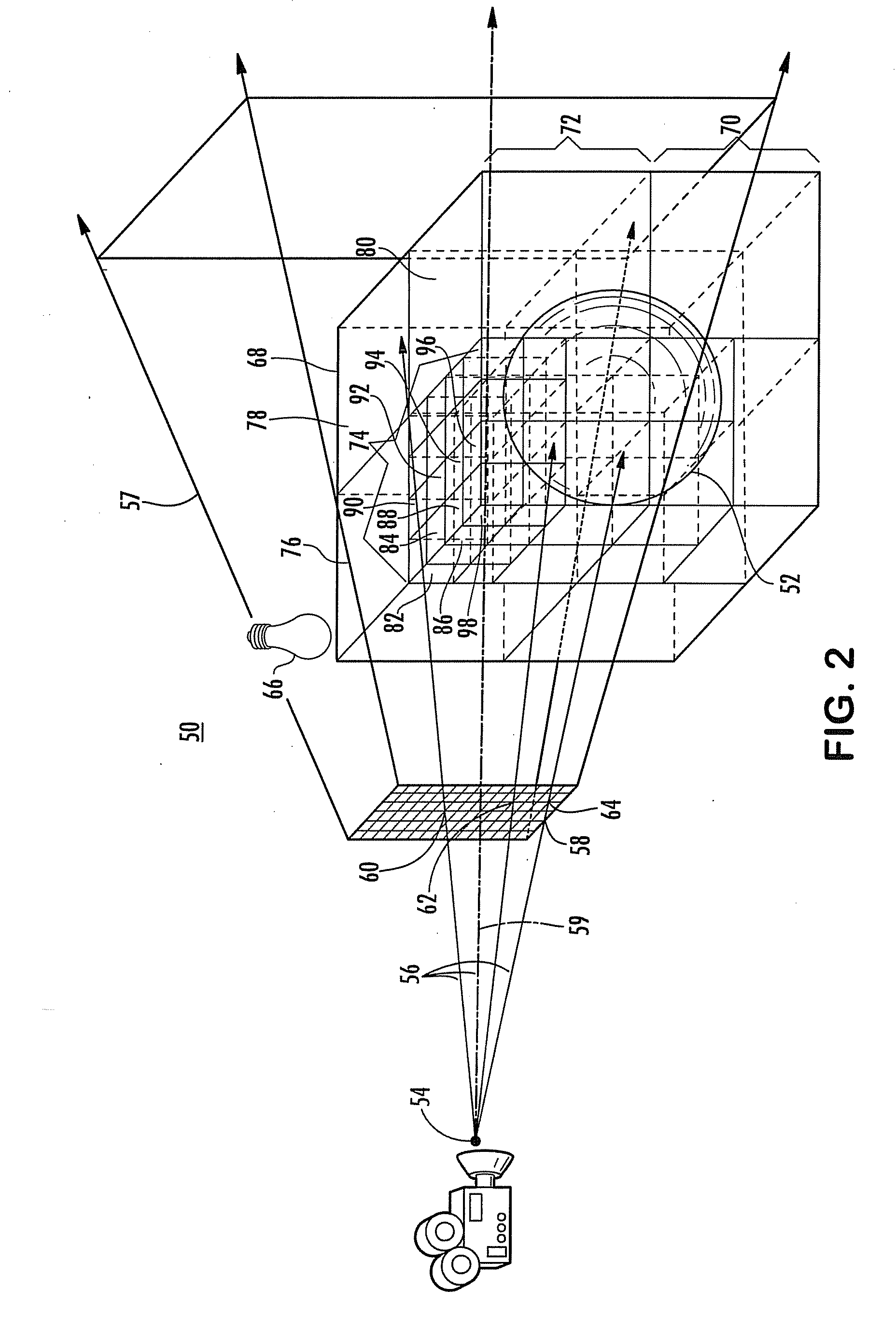Tree Insertion Depth Adjustment Based on View Frustrum and Distance Culling
a tree and depth adjustment technology, applied in the field of image processing, can solve the problems of slow setup of the algorithm used to build the ads, large amount of processing and memory, and the lack of current ray tracing techniques
- Summary
- Abstract
- Description
- Claims
- Application Information
AI Technical Summary
Benefits of technology
Problems solved by technology
Method used
Image
Examples
Embodiment Construction
[0026]Embodiments may build an efficiently balanced ADS or other tree structure based on view frustum and distance culling. Aspects of the invention may conduct ray tracing operations where the rendering compute requirement is reduced by varying the size of bounding volumes into which image data is divided. Another or the same embodiment may vary a number of primitives included within nodes of an acceleration data structure that correspond to the bounding volumes.
[0027]Aspects of the invention may rebuild a tree structure every frame to allow frame-to-frame optimization of leaf nodes in a highly threaded network on a chip processor. Where so configured, the amount of geometry in each leaf node may be based on a spatial distance from a reference point. For instance, the number of primitives in the nodes may depend upon their distance from the center of the view frustum to outlying boundaries of the bounding volume. Another or the same embodiment may determine the geometry in a node b...
PUM
 Login to View More
Login to View More Abstract
Description
Claims
Application Information
 Login to View More
Login to View More - R&D
- Intellectual Property
- Life Sciences
- Materials
- Tech Scout
- Unparalleled Data Quality
- Higher Quality Content
- 60% Fewer Hallucinations
Browse by: Latest US Patents, China's latest patents, Technical Efficacy Thesaurus, Application Domain, Technology Topic, Popular Technical Reports.
© 2025 PatSnap. All rights reserved.Legal|Privacy policy|Modern Slavery Act Transparency Statement|Sitemap|About US| Contact US: help@patsnap.com



